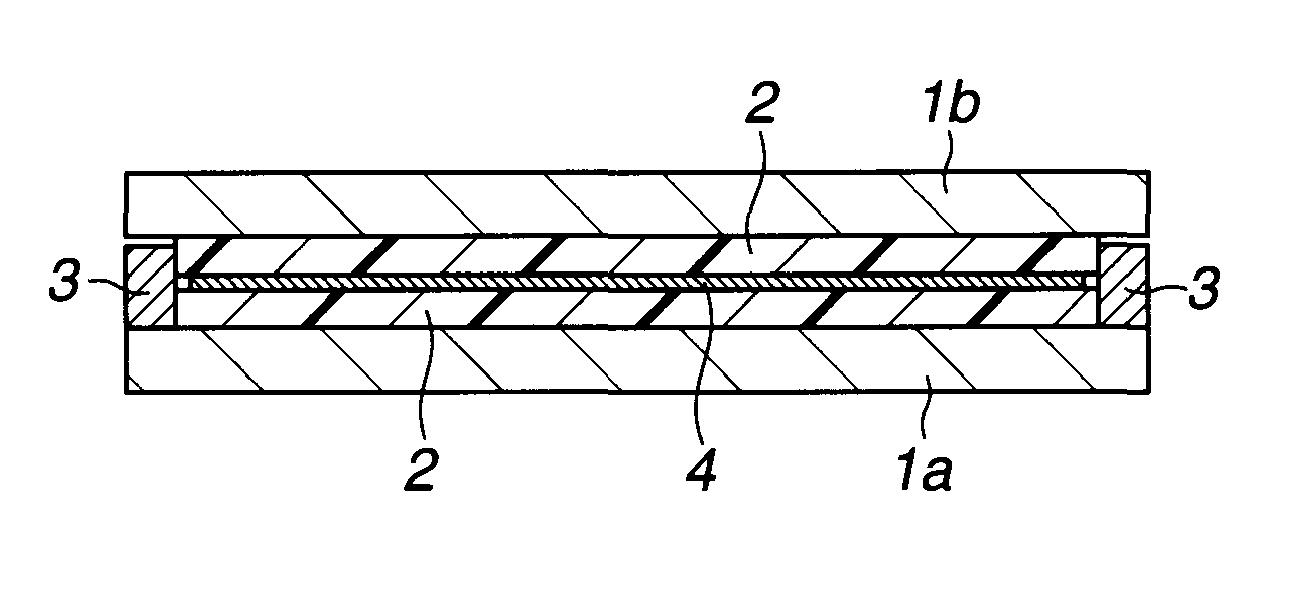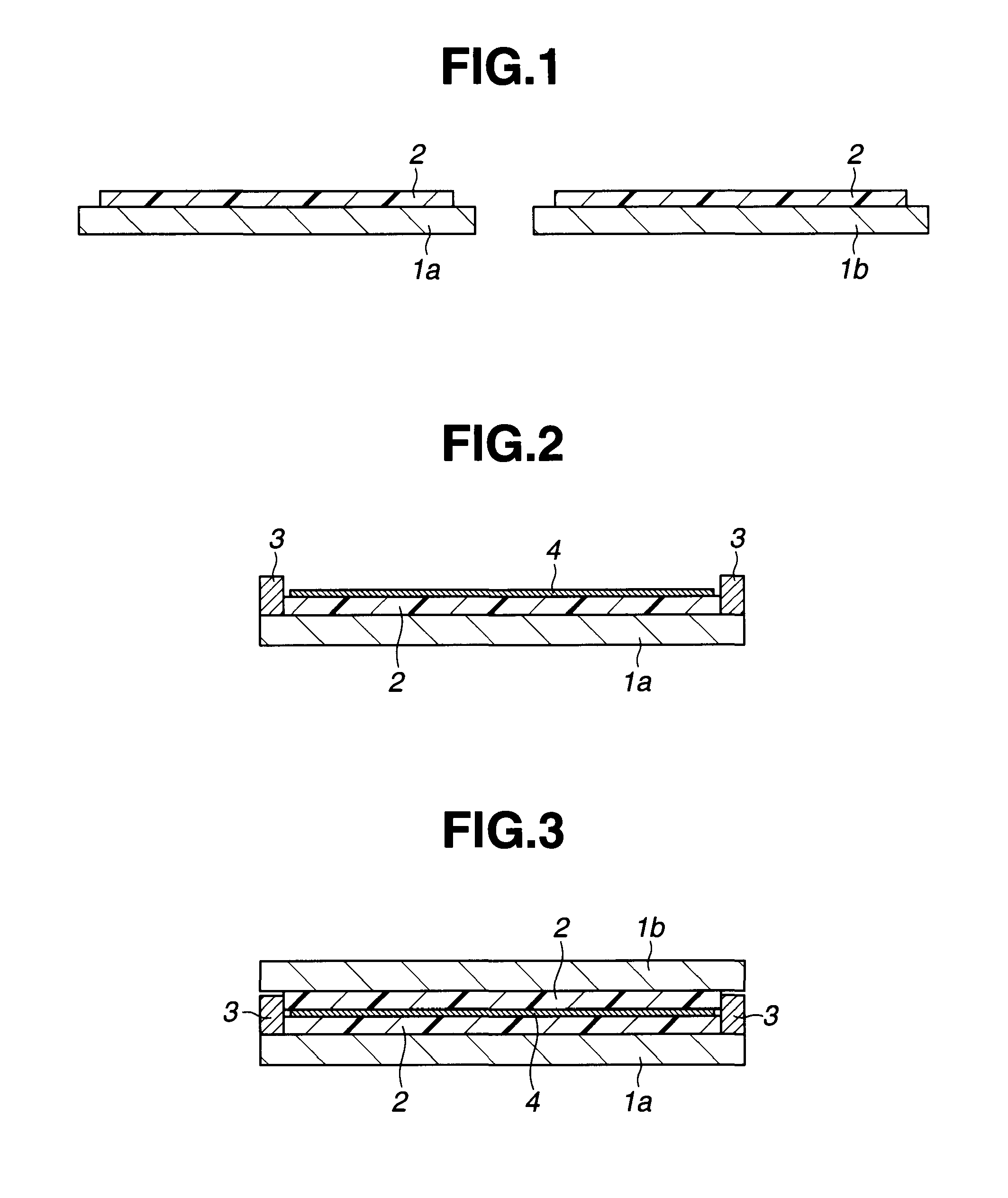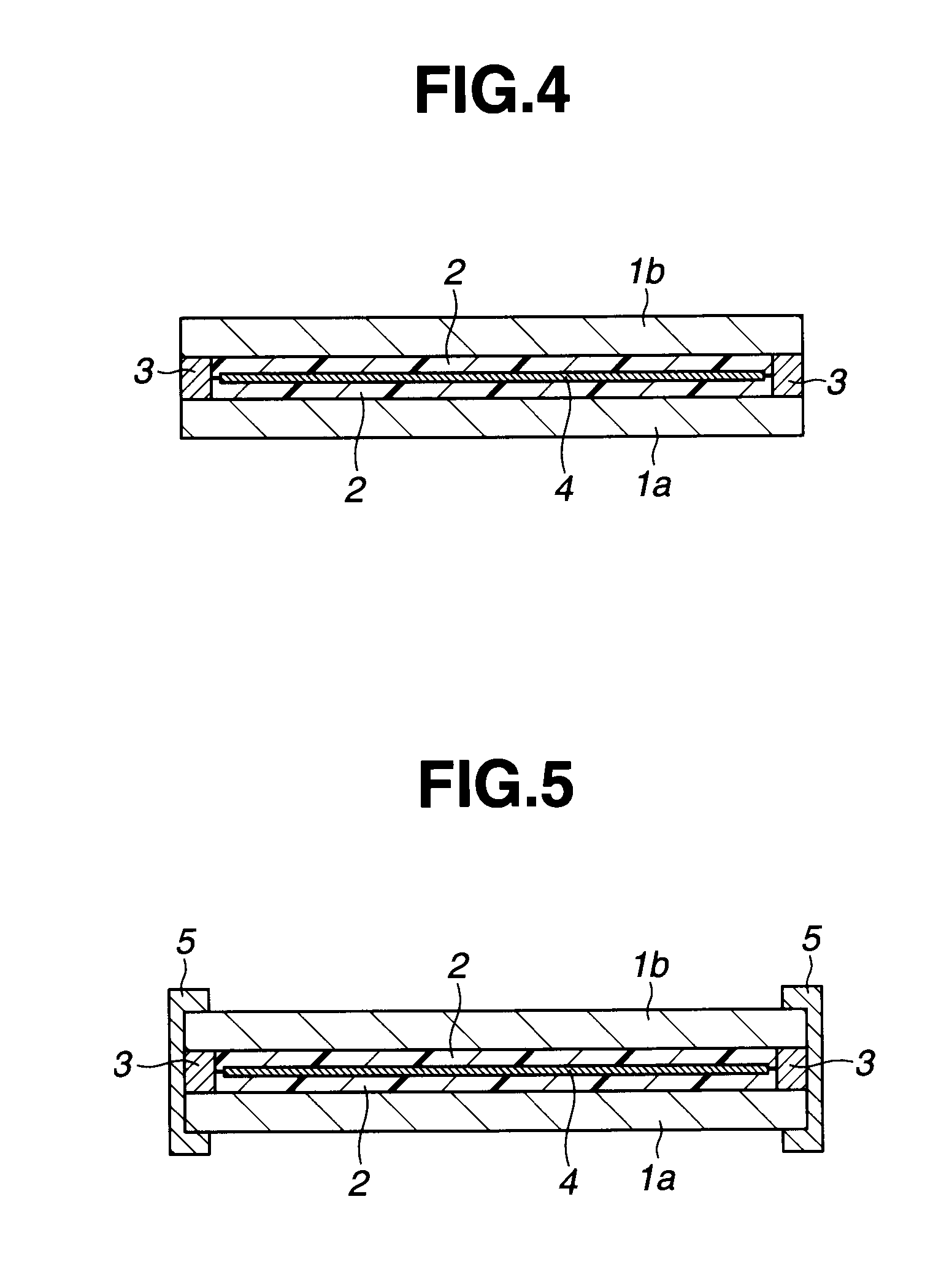Manufacture of solar cell module
- Summary
- Abstract
- Description
- Claims
- Application Information
AI Technical Summary
Benefits of technology
Problems solved by technology
Method used
Image
Examples
example 1
[0087]A silicone gel composition was prepared by mixing 100 parts of both end dimethylvinylsiloxy-terminated dimethylpolysiloxane having a viscosity of 1,000 mPa-s, 63 parts of both end trimethylsiloxy-terminated dimethylsiloxane / methylhydrogensiloxane copolymer represented by the formula (3) and having a viscosity of 1,000 mPa-s (to give 1.05 silicon-bonded hydrogen in component (B) per silicon-bonded alkenyl in component (A), that is, H / Vi ratio=1.05), and 0.05 part of a dimethylpolysiloxane solution of chloroplatinic acid-vinylsiloxane complex (platinum concentration 1%) until uniform.
When the composition was cured in an oven at 150° C. for 30 minutes, the cured gel product had a penetration of 70. It is noted that the penetration was measured according to JIS K2220 with a ¼ cone, using an automatic penetrometer RPM-101 by Rigo Co., Ltd.
[0088]Each of two glass plates was masked on its peripheral region of 5 mm wide with masking tape. The composition was applied to one surface of ...
example 2
[0091]A solar cell module B was manufactured as in Example 1 except that the composition was knife coated to two glass plates and heated in an oven at 120° C. for 10 minutes to form cured silicone gel coatings having a thickness of 500 μm.
example 3
[0092]A solar cell module C was manufactured as in Example 1 except that the composition was knife coated to two glass plates and heated in an oven at 150° C. for 10 minutes to form cured silicone gel coatings having a thickness of 800 μm.
PUM
 Login to View More
Login to View More Abstract
Description
Claims
Application Information
 Login to View More
Login to View More - R&D
- Intellectual Property
- Life Sciences
- Materials
- Tech Scout
- Unparalleled Data Quality
- Higher Quality Content
- 60% Fewer Hallucinations
Browse by: Latest US Patents, China's latest patents, Technical Efficacy Thesaurus, Application Domain, Technology Topic, Popular Technical Reports.
© 2025 PatSnap. All rights reserved.Legal|Privacy policy|Modern Slavery Act Transparency Statement|Sitemap|About US| Contact US: help@patsnap.com



